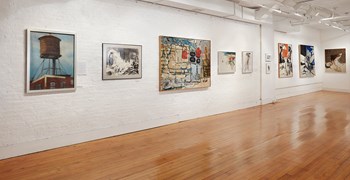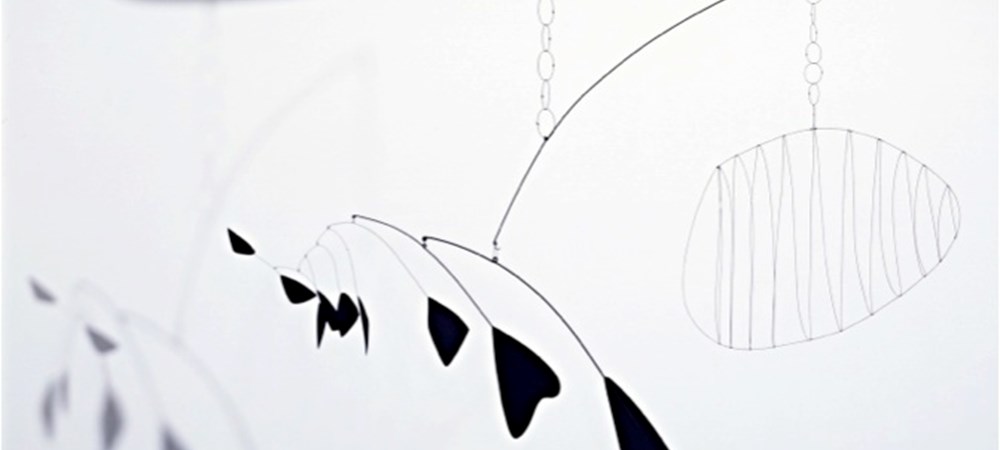Alexander Calder: Art Answers the Questions of Our Lives
The first time I saw Alexander Calder’s Lobster Trap and Fish Tail, I loved it! I was 7, and my parents had taken me to the Museum of Modern Art. The mobile hung from the ceiling above the stairwell, all the parts were turning ever so slowly in the air, and I thought it was wonderful! Then, in the garden I saw his Whale. It was all black and sitting on the ground, but it seemed light and joyful. Now, many years later, I admire Calder’s work even more, as I see the large meaning it has for people everywhere and how it answers a central question of my life.
One of the most popular artists of the 20th century, Alexander Calder revolutionized sculpture, added a new dimension to it—motion! He was, said Eli Siegel, founder of Aesthetic Realism, in his great lecture on sculpture, Weight As Lightness, “[one of] the people who just play topsy-turvy with the older notions of sculpture.” His mobiles were a new art form, and his monumental stabiles, which are stationary, have enlivened public spaces all over the world....“Very few works of art,” wrote his friend, the critic Jean Lipman, “can make us feel light-hearted the way Sandy Calder’s do.” The reason is deep, and is explained by this landmark principle of Aesthetic Realism:
“All beauty is a making one of opposites, and the making one of opposites is what we are going after in ourselves.”
Calder’s work puts together joy and depth, lightness and heaviness in a way that makes for what people everywhere are yearning for. In one of his definitive essays on art, Eli Siegel explained: "Art makes the world less heavy, and oneself less heavy. In art lightness is seriousness, also, because it is a lightness based on things truly seen, not on things evaded"....Read more












